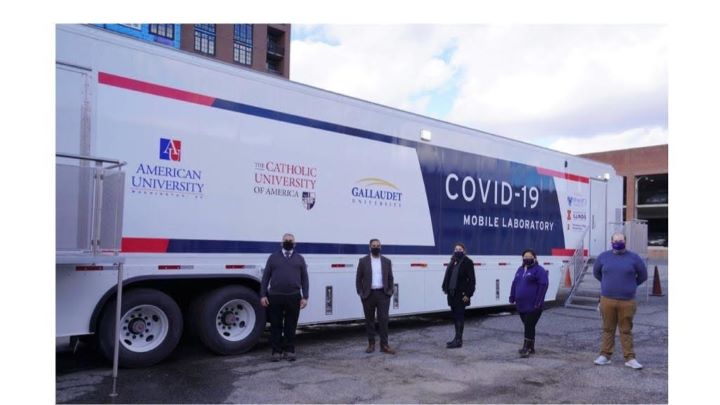The path to the ADA and Dr. Rosanne Rushing’s continued work

The early days of the Disability Rights Movement were, like many movements, a product of their environment. For one thing, many vaccines that are now considered standard in the United States had not yet been developed. Infectious disease outbreaks, including the particularly societally influential virus, polio, were common, and the long-term effects on survivors ranged from mild to severe. For another, the American eugenics movement rose to prominence under the influence of people like Madison Grant, John Harvey Kellogg, and Alexander Graham Bell; the eugenics movement influenced everything in American society from ethnicity-based immigration restrictions of the early 1900s to the forced sterilization of people with disabilities as in the landmark US Supreme Court case of Buck v. Bell, and expanded beyond the United States including helping inspire Adolf Hitler’s manifesto Mein Kampf. Given this societal backdrop and the existing vulnerabilities individuals with hereditary and acquired disabilities at the time already experienced, many people were hesitant to associate with groups taking approaches that risked pushing them even further outside the mainstream. With the early successes of the American Labor Movement, using it as a model was a natural first choice. However, the Civil Rights Movement’s slew of victories in all three branches of US government including Brown v. Board’s overturning of Plessy v. Furguson’s ‘separate but equal’ doctrine and the passing of the Civil Rights Act of 1964 presented a new and effective model for those interested in taking a civil rights approach that would unite diverse groups with similar political concerns into a broad coalition of activists.
With much advocacy from the Disability Rights Movement, the 1973 Rehabilitation Act was passed. Section 504 of this law guaranteed non-discrimination and reasonable accommodation to employees of the federal government and any group receiving funding from the federal government including public universities and public hospitals. Enforcement of Section 504 was somewhat derailed by the timing of Watergate, the economic challenges during the Ford administration, and concerns about how reasonable accommodation would be achieved by institutions with limited financial resources. Concurrently, Relf v. Weinberger, the case of two Black teenage girls’ involuntary sterilization at an organization accepting federal funding, resulted in both reaffirmation of the ‘right to privacy’ at the heart of Roe v. Wade (which had only been decided one year before) and paved the path for the informed consent requirements now foundational to American medical practice. With additional pressure from activists, Section 504’s enforcement began.
The Americans with Disabilities Act (ADA) was signed into law on July 26, 1990, with then President George H.W. Bush stating, “Let the shameful wall of exclusion finally come tumbling down.” With five titles building on the foundation laid by Section 504, the ADA ensures equal opportunities for employment free from discrimination and requires governmental bodies, businesses, and nonprofits eliminate physical and service barriers to participation including telephone relay services for individuals with hearing or speech impairments. The ADA also addresses myriad topics related to its implementation and enforcement. The text was intentionally written to be broad in defining what qualifies as a disability in recognition of the Disability Rights Movement’s diverse coalition. It simultaneously acknowledges the funding concerns that posed a stumbling block for Section 504. The notion of ‘undue burden’ largely boils down to a recognition that the financial resources available to a struggling mom-and-pop shop will be different than larger institutions like public universities, and adjusts the expectations of what changes each organization ought to make towards achieving accessibility accordingly.
SDSU alumna Dr. Rosanne Rushing is no stranger to the challenges posed to achieving accessibility. Disability inclusion has been a cornerstone of her career. As the Public Health Program Director at Gallaudet University, she helped develop the certification course Deaf Leadership in Disaster Risk Reduction and Emergency Preparedness taught predominantly in American Sign Language. During the early days of the COVID-19 pandemic, she collaborated with the District of Columbia’s local health department on emergency planning and accessible communication and with FEMA’s Office of Equal Rights on accessibility at COVID-19 vaccination sites, and has advocated with the United States Agency for International Development (USAID) to make disability inclusion a requirement of their grant funding. In 2022, Dr. Rushing taught the undergraduate course PH 496 for San Diego State University Global Campus to introduce some of the health related challenges faced by those with disabilities and the importance of disability inclusion in public health.
“Almost everyone is likely to experience some form of disability – temporary or permanent – at some point in life,” Dr. Rushing explained. Disability inclusion matters not only because of the number of people impacted but because of the demographics of those impacted. Now working with IPPF Ukraine’s response to ensure sexual and reproductive rights of Ukrainian, LGBTQ+, and Roma women and girls, Dr. Rushing noted that refugees with disabilities have a higher risk of experiencing gender-based violence and lacking access to sexual and reproductive health information and services. “The intersectionality of gender, age and disability are all critical public health issues essential for public health students to have a deeper foundational knowledge of disability inclusive health.”
“One of the more challenging misconceptions about disability among public health practitioners and students,” Dr. Rushing explained, “is that disability inclusive health is difficult to implement or include in programming.” To combat this misconception, she continuously advocates with the Council on Education for Public Health (CEPH) to require courses on disability inclusivity as a requirement for schools of public health to increase awareness within academic institutions; however, she encourages academic institutions to emphasize the importance of disability inclusion regardless of the accreditation requirements. For example, in her PH 496 course, she included having her students perform a physical accessibility audit of their communities. She also encourages professors to learn about students’ needs and adjust their courses’ norms beyond the ADA’s minimum requirements so their students can feel empowered and excel.“We all can improve inclusivity by creating awareness about disability inclusive health and our interconnectedness to each other and everyday life.”
The ADA has continued to grow and evolve since its enactment. In the case of Olmstead v. LC, disproportionate incarceration of people with mental disabilities was challenged, and the ADA Amendments Act of 2008 expanded what conditions could qualify as disabilities. “The ADA has been essential in setting standards for the rights of persons with disabilities and providing necessary accommodations for students with disabilities,” Dr. Rushing emphasized. “When implemented properly, it does provide certain security against discrimination and provide opportunities for persons with disabilities. The areas where I have seen it fall short are in the ‘loopholes.’” In her time at Gallaudet, Dr. Rushing found that Deaf and Hard of Hearing students often struggle to find organizations offering internships that are willing to take them on and commit to providing an interpreter; in addition to the myriad barriers many graduate students experience when searching for internships, this has made it exceptionally difficult for her students. However, Dr. Rushing believes that these challenges are not insurmountable. “Public health is a community of like-minded people trying to make the world a better, healthier, more equitable place,” she stated. While progress has been made, there is still work to be done to foster inclusivity and create a world where every person is both valued and can thrive. “I am proud to be part of this community of change-makers!”

